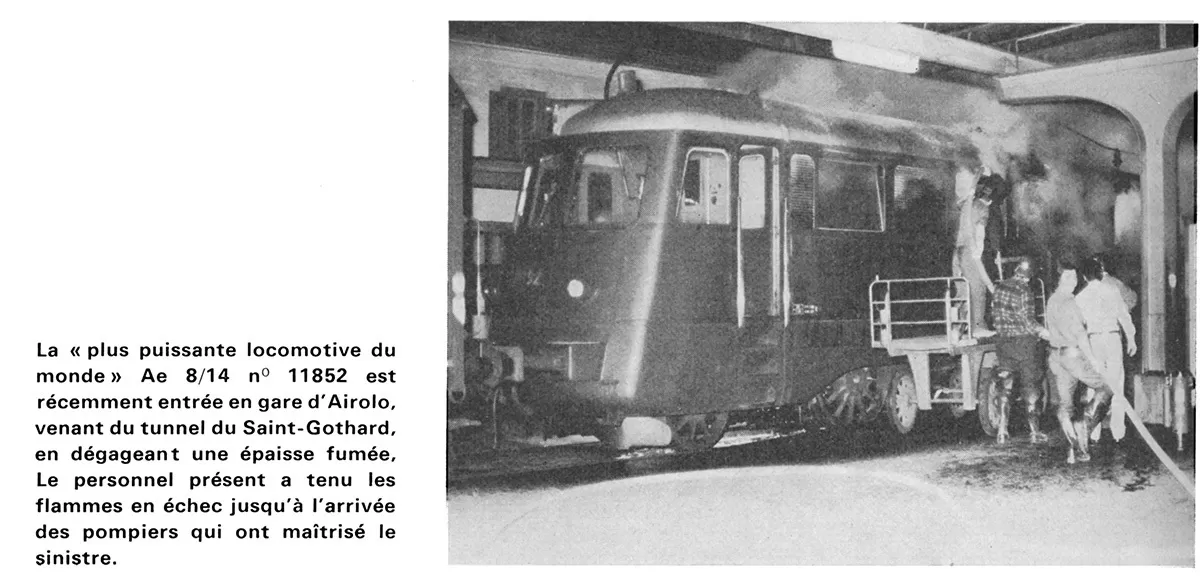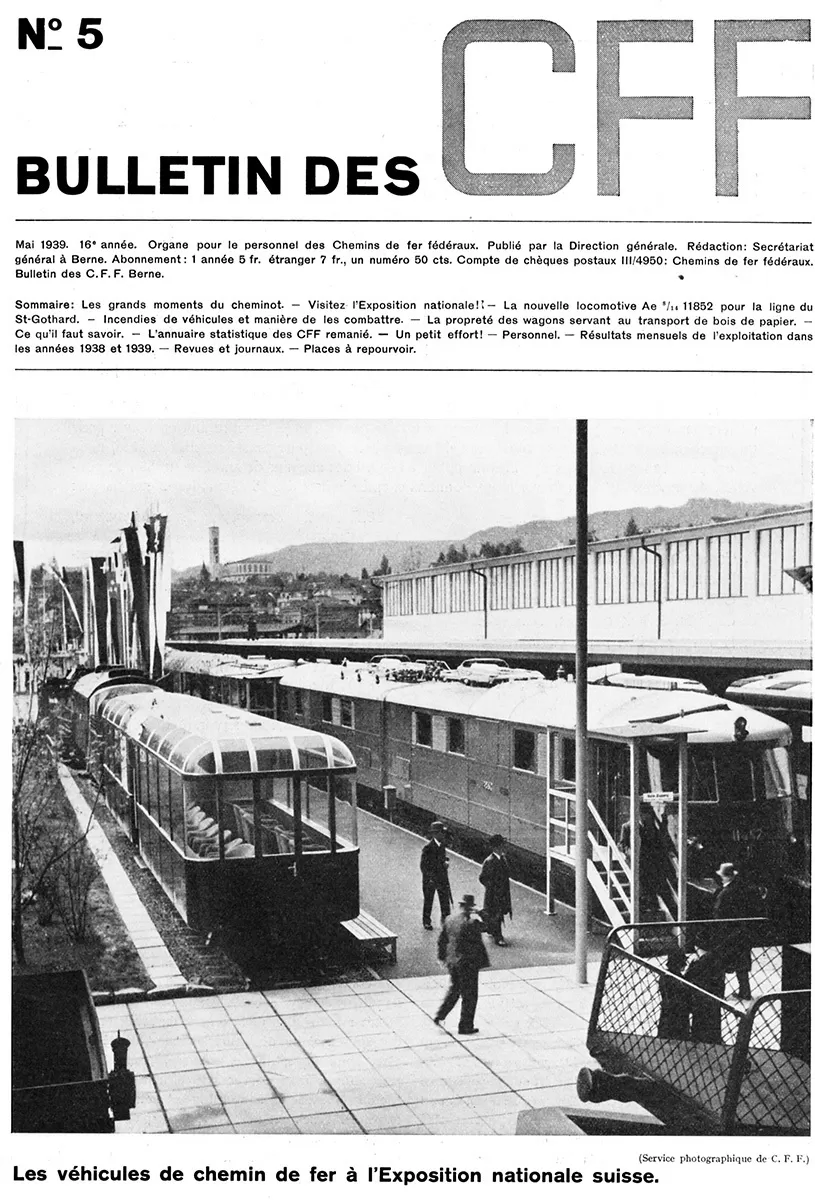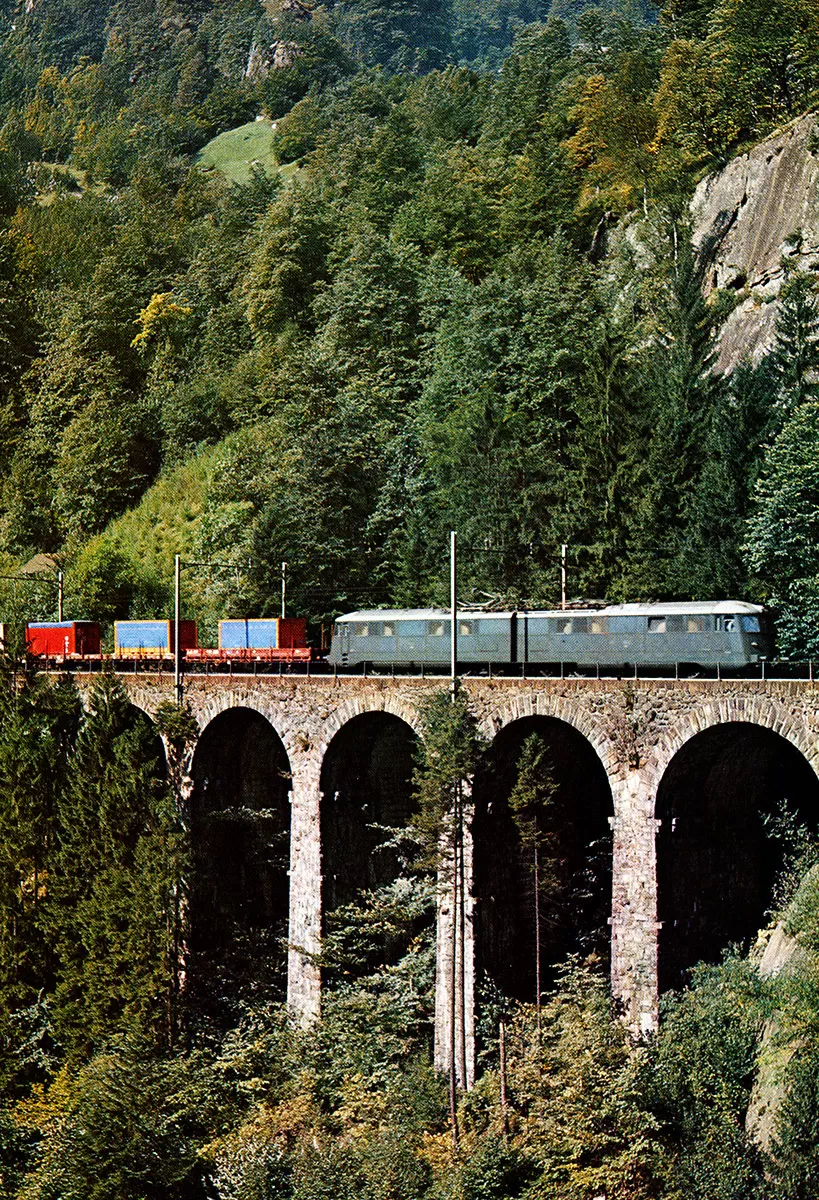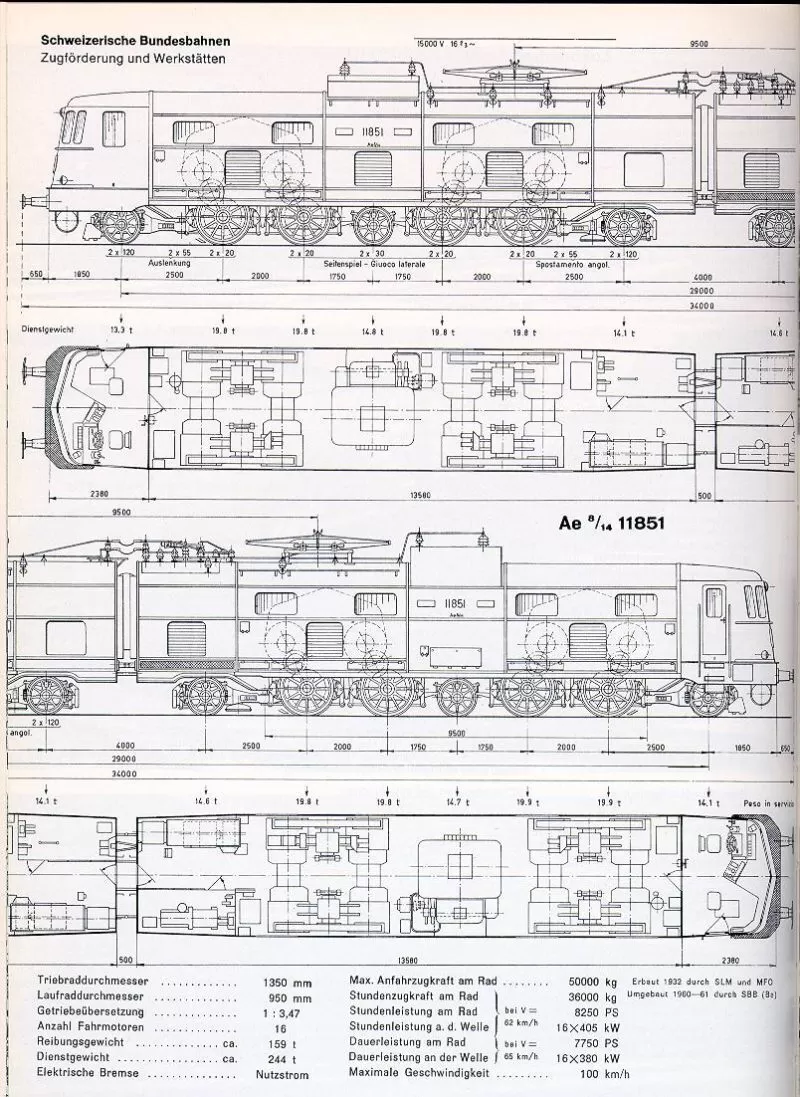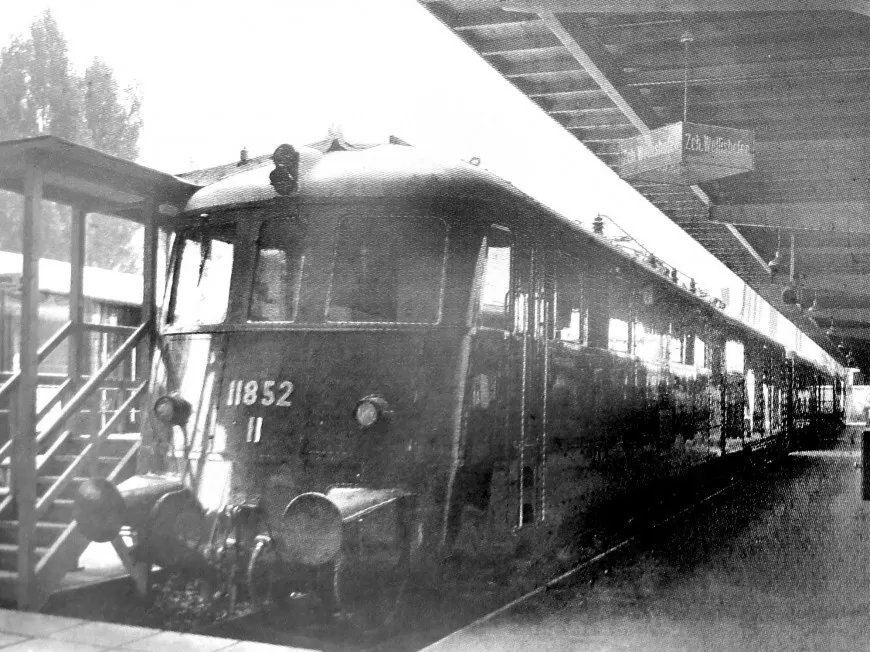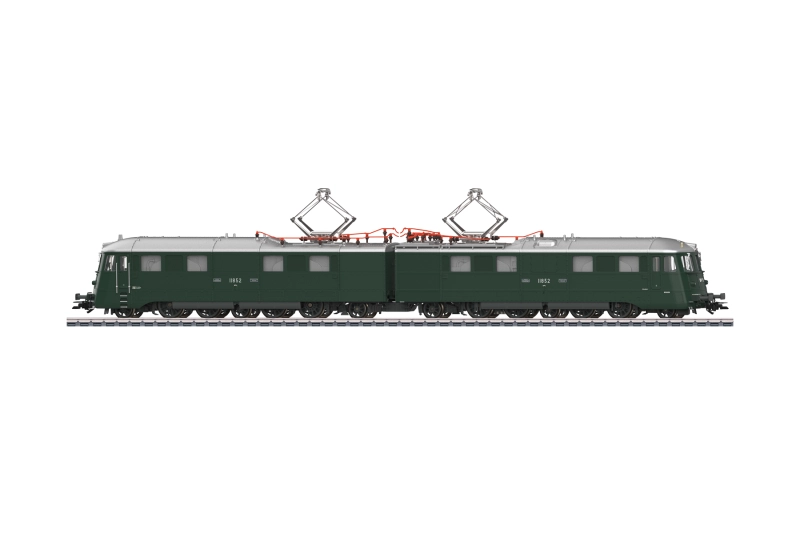
Source: Werner Brutzer

Source: commons.wikimedia.org

Source: Fototak
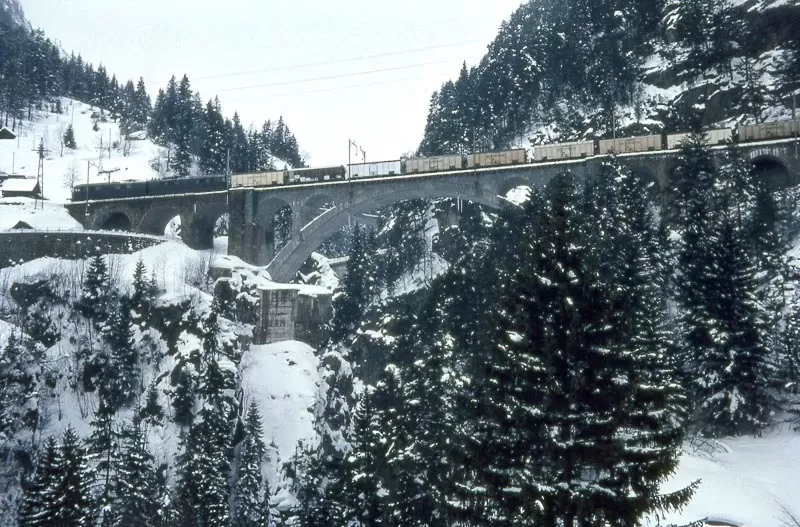
Source: Max Hintermann
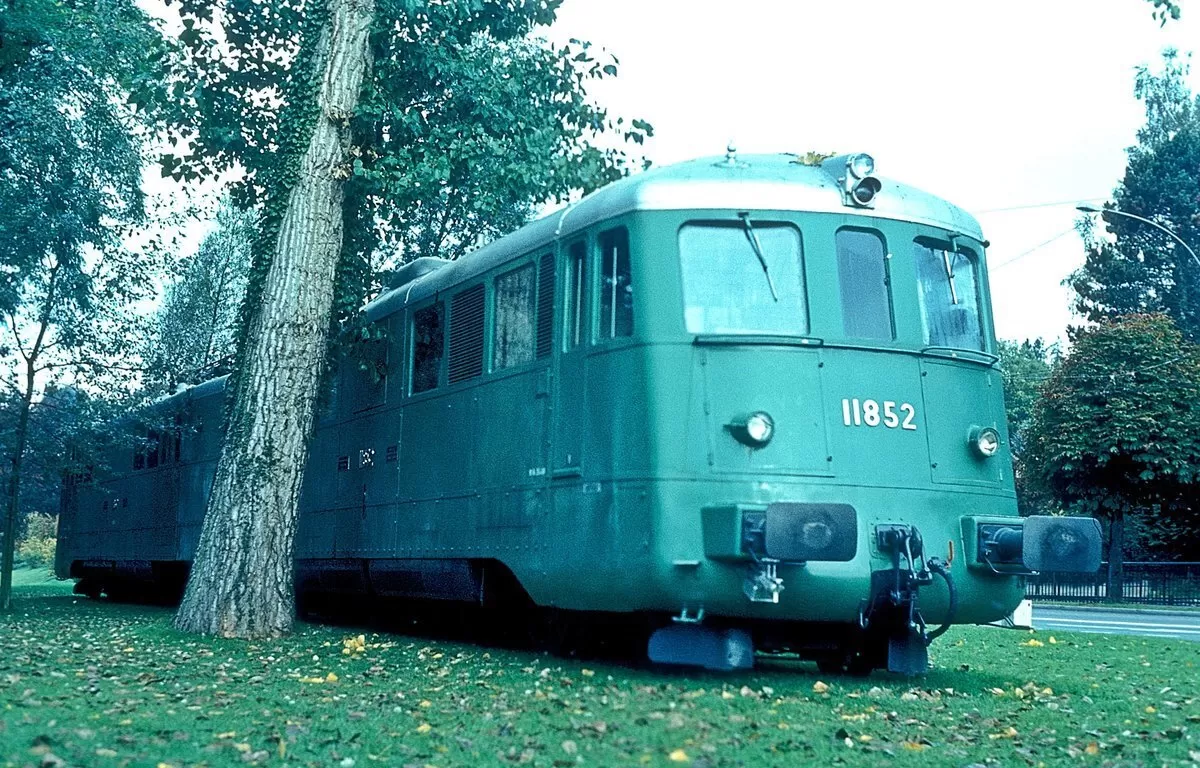
Source: Werner Brutzer

Source: Werner Brutzer
Vehicle type:
Registration country:
The electrification of the Gotthard Line including its approach
routes from Lucerne to Chiasso was completed on May 18th, 1922. The
locomotives purchased for it (the classes Ce 6/8 II & III, Be 4/6
and Be 4/7) functioned extremely well and clearly showed the
advantages of electrical operation.
However, the new electric motive power soon meant increasing loads
and the situation on the Gotthard became increasingly tighter. In
neighbouring countries, there had soon been talk that loads over
the Gotthard could be moved quite a bit faster than previously.
Even though the electric locomotives of the first generation were
clearly more powerful than the last steam locomotives, they could
not take on endlessly increasing loads. A new locomotive class
should therefore provide a remedy. The first studies showed that a
locomotive with four sets of driving wheels would represent the
most favorable solution. Express trains of 600 metric tons would
have required two of these units in multiple unit control. There
were no multiple unit control for locomotives with electric brakes
for this power class, in which the units could be uncouples and
coupled again as often as desired.
The Swiss Federal Railways (SBB) therefore decided on a double
locomotive that was not separable in operation. This enabled a
savings in two engineer's cabs and various pieces of equipment only
required once. In February of 1929, the SBB requested the
locomotive builders to come up with designs for the desired unit
with a considerable specification profile. It had to be 100 km/h
fast and able to haul 600 metric ton passenger trains at 62 km/h
and 750 metric ton freight trains at 50 km/h on a 2.7% grade.
Electric regenerative brakes had to be able to stop the locomotive
weight on a 2.7% descending grade. After twenty submitted projects,
the SBB decided on the construction of one each prototypes from
designs by SLM/BBC and SLM/MFO.
1939
Ae 8/14 11852 enters into service
The third and last double locomotive of the Ae 8/14 series was not able to take full advantage of its incredible power because the couplings of the leading vehicle were not able to withstand the stress of its full tractive effort.
Concerns registration number(s): 11852
1963
Refurbishment
From 1963 until 1971, the original light green loco was painted in the typical SBB dark green of the period.
Concerns registration number(s): 11852
1972
Retirement
Concerns registration number(s): 11852
Do you have additional informations regarding this vehicle?
Help us writing the history of Ae 8/14 11852! Your knowledge is precious for us and the entire community, do not hesitate to share your facts, photos or videos:
Latest update on the 22nd of January 2018 at 22:30
Contributor(s): Tudor C.
Discussion forum

